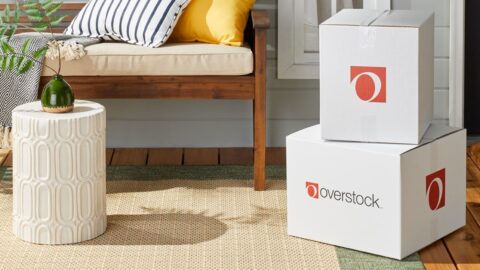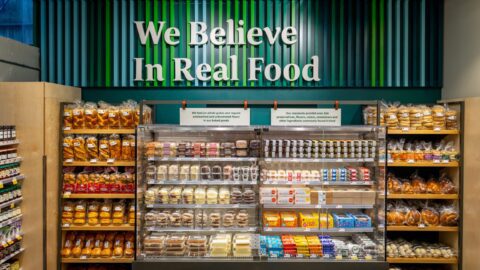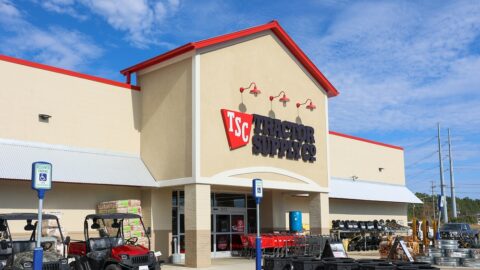Editor’s Note: This article is an excerpt from one of RetailWire’s recent online discussions. Each business morning on RetailWire.com, retail industry execs get plugged in to the latest news and issues with key insights from a “BrainTrust” of retail industry experts.
By Tom Ryan, Retailwire
While retail expansion has slowed significantly this year, many of the newer concepts are offering fresh takes on the experiential retailing trend, according to Retail Traffic magazine. At experiential retailers, the way consumers interact with the store environment is often more important than the merchandise.
For example, American Girl Place stores include a café with special booster seats for the chain’s 18-inch dolls, an on-site theater featuring young actresses as characters from the company’s books, and a salon where girls get their dolls’ hairdos made over. Other retailers known for experiential strategies include Apple stores, Build-A-Bear Workshops, FAO Schwarz, Niketown, and outdoor retailers such as REI and Bass Pro Shops.
Among the new crop of experiential retailers, according to Retail Traffic, is Gilly Hicks, an intimate apparel spin-off from Abercrombie & Fitch. The 10,000 square foot concept is built around the fictional story of Gilly Hicks, an English teen who moves to Australia with her family in the 1920s and opens a lingerie store. It resembles a beach house but is designed as a colonial-style manor house with rooms featuring fireplaces, chandeliers, plush sofas and antique-styled cabinets. “Gilly’s” portrait hangs in the “living room” of the store, between the foyer and the “bra library” where hundreds of bras are displayed on dark cherry wood shelves.
Advertisement
Other examples of newer experiential concepts:
• House of Hoops: A basketball-themed concept from Nike and Foot featuring technology to help consumers color coordinate their footwear and apparel and customize T-shirts. A VIP Area allows shoppers to read magazines, or check out commercials and behind-the-scenes interviews with top NBA players – all from leather chairs in front of a 65-inch TV screen.
• Ridemakerz: Described by the Chicago Tribune as the American Girl for boys, consumers can customize their own toy car or truck with a choice of colors, tires, wheels, lights and various options. Each comes with a certificate of title, personalized license plate and assembly tools;
• Aura: From French cosmetic giant, L’Oreal, the stores feature diagnostic stations where salespeople help customers pinpoint the product best suited for their skin type;
• Finish Line Ltd: Created by Nike and Finish Line, the stores are divided into three sections – running, sport style and training – and feature a wide array of products ranging from Nike footwear to iPod Nanos. Customers can test numerous products before buying them.
“You can’t just put merchandise in a store nowadays,” Mike Tesler, partner and principal with Retail Concepts, told Retail Traffic. “You have to put action into it.”
MAKING MARKETING FUN AGAIN
RetailWire’s BrainTrust of industry experts added further insights to this report on the site’s discussion board, encouraging retailers to focus on product quality and excellent customer service:
Wave of the future sums it up best. What we are trying to do is add value to the customer’s shopping experience. Putting product on a shelf with a price label will not cut it anymore. We need to razzle and dazzle the customer and make them want to come to the store. These new concepts are great at making shopping fun again. Apple really stands out as a retailer that actually promotes browsing. All the products work and are available for use without distraction. Sales people are friendly and know their products well
Doron Levy, President, Captus Business Consulting
All these retail concepts have one component in common. They are further segmenting the consumer market. With this narrowing approach comes the need for additional store elements to keep consumers coming back. The problem is: when do you segment the consumers too narrowly resulting in a great store but too few consumers? This extreme segmentation seems to work great on the internet, but I have yet to see it work in retail.
The other side is for a store to have lasting consumer pull. Some of the concepts look like they will bring the consumer in one or two times, and then they will be tired of the store. This is called a fad. Best example I have seen of this is Cold Stone Ice Cream. Fund to shop the first few times, and then they become old hat.
Great retailers always change with the times and keep the excitement coming. I see real concern for these formats, but greater or narrowing consumer segmentations will continue.
W. Frank Dell II, CMC, President, Dellmart & Company
I think the experiential store concept is great as long as it remains a brand concept, not a retail one. It’s easy for Nike, Apple, Nokia, etc to keep exciting visual concepts and new experiences coming. But they need to respect that other retailers are trying to sell their products as well.
Niketown customers should become more loyal to Nike products regardless of where they shop. Nokia store visitors might not be able to afford the upscale products they see there, but maybe they can walk out thinking Nokia is they brand they want when their contract runs up. Apple Store customers should not believe that the Apple Store is the only place to buy Apple products.
One idea: This concept should find a good e-commerce execution. Maybe part of a major brand could load an e-commerce site with minimal retail tags and maximum new products, cool visuals and more community than more tactile e-commerce sites have.
John Gaffney, Senior Analyst, Retail TouchPoints
First I disagree with the comment that this process of creating interaction in stores is further segmenting the market. The market is already more segmented than it ever has been and that trend will continue regardless of what retailers do.
Second, today’s retail environment in the U.S. is changing significantly for two reasons. Many stores now also have an online presence so consumers can purchase products online without visiting the physical store. In addition, if online, consumers can purchase the product from any variety of companies. As a result, visits to physical stores decline–except for visitors who want to see, touch, and try the product before going home and buying online. In this circumstance retailers need to give consumers a reason to want to come to the physical store.
One of the disadvantages of purchasing online is having to pay delivery or shipping charges. However, the second reason for a change is the price of gasoline. Rather than taking a trip to a store, consumers are likely to begin to figure out whether it is more cost effective in gasoline charges to go to the store where they may actually spend more money or to order online and pay the shipping charge. For example, some people have decided that Amazon has good prices so they have paid the $75 a year to have two-day free delivery any time they make a purchase. If it costs $60 to fill up on the tank on your car, that $75 charge could save a lot of trips to the store.
Again, what can the retailers do to make people WANT to visit the physical location? Apple is doing something right, given the crowds in their stores even though they have an online store.
Camille Schuster, President, Global Collaborations, Inc.
The latest marketing thinking is that emotion is baked into rational decision-making in a way that consumers are not even aware of; read “Predictably Irrational.” From the work at the ARF, we believe that a self-expressive sense of belonging will result in a tremendous halo effect in a way that begins to favorably color impressions of a store’s assortment and prices. Hence, emphasis on experience is critical as a differentiator and by that we don’t mean just short lines at check-out but an experience that creates a true sense of belonging (think Apple, or how a musician feels when he/she walks into a Sam Ash/Guitar Center).
Joel Rubinson, Chief Research Officer, The Advertising Research Foundation (ARF)
“Get Plugged in with RetailWire. Membership in RetailWire.com is free to all retail and related industry professionals. Simply go to www.retailwire.com and click the FREE REGISTRATION button.”














